Dahlov Ipcar’s newest paintings, made this year, lead the solo exhibition that fills both floors of Freeport’s Frost Gully Gallery. Ipcar has showed at Frost Gully, Maine’s oldest commercial gallery, since it was founded in 1966 by Thomas Crotty, who died earlier this year. Consider also that Ipcar had a solo exhibition at the Museum of Modern Art in 1939. That she continues to show is a testament to her staying power. But Ipcar has said that this will likely be her last solo show of new work.
Because of that and because this is the first show at Frost Gully since Crotty’s passing, much of the narrative likely will be flavored with conversations about legacy and mortality. Even the gallery explains Ipcar’s newest work in terms of the macular degeneration from which she now suffers. While I respect the gallery’s instinct for transparency, this discourse partially eclipses the genuine triumph of Ipcar’s extraordinary artistic accomplishment.
My favorite works in “Recent Paintings” are two of the three 2015 paintings others might use to illustrate new limitations in Ipcar’s work. “Pronghorn Antelope – Swift Fox Race” and “Panther and Birds” are both much looser than Ipcar’s typical, highly stylized works. The marks are much more varied and less under the control of a well-rehearsed hand. We see patches of blank canvas – a hallmark of early modernist paintings that announced their energized spontaneity. So, to a large extent, Ipcar’s newest paintings feel even more dynamic and lively than her previous work.
This follows a certain logic of postwar American art in which the looseness of the painting came to signify the personal, living presence of the individual artist, and it even more compellingly recalls the active intellectual engagement of an artist engaging in problem-solving. The most extraordinary (and well-documented) example of this came very recently as painter Jon Imber’s body succumbed to amyotrophic lateral sclerosis, or ALS. Imber proved that painting is less the result of a well-flicked wrist than an artist’s force of will. To my shock, I found I generally preferred Imber’s post-diagnosis paintings to his earlier work. In that light, it is less surprising that I find Ipcar’s most recent paintings are particularly interesting and even more muscular than her previous work.
Comparing Ipcar’s 2009 “Caribou and Wolves” to her pronghorn is like comparing an image to a vision. The caribou and its trackers are theatrically heroic and as elegant as ballet dancers. The pronghorn, on the other hand, feels more real precisely because it is less idealized. Its forward shoulder presses down to the physical ground among its ostensible hunters despite the contest. The caribou races no less against the night than the lupine pack. And while the pronghorn is awash in the golden light of the sun on the horizon, it seems less a fleeting scene. The thick impasto whites both call back to the greatness of classical painting and the directness of Ipcar’s own modernist forebears (she is the daughter of the Zorachs, after all).
What seems to matter even more, however, is the deeper sense of natural cycle. Instead of day/night and fears/dreams, Ipcar blends the hunter and the hunted into a graceful, singular entity: The Cycle of Life. And she even matches this to our cultural lives; what she incorporates, so to speak, becomes both the past and the present as it enters the body of her work, and so on.
While the work in this show ranges back to 1945 (“Otto,” a charming and chubby salamander rendered in pencil, for example, was Ipcar’s companion for almost 30 years), it is led by a suite of 16 paintings from the past two years. Some are vastly complex, like the 2014 “Blue Moon Dance” in which scores of creatures pair up – setting the stage for a conversation about appetites and variety, as well as Nature’s notions of intertwined fates.
There are many notable works. “Blue Cream Cat” (1983) reminds us of the extent to which Icpar could luxuriate in surface and rich visual textures. “Equine Pinwheel” (2012) underscores Ipcar’s ceaseless dedication to wit and play while articulating her fundamental premise of multiple viewpoints. To the goose in its jaws, the fox in “Fox Is on the Town” (2013) is the devil, while the goose, to the fox, is a little bit of heaven.
This year’s “Winter Chipmunk” is another reminder that Ipcar’s newest paintings may be sprier than ever. “Hex Signs” (2014) features horses and mystical symbols in a way that highlights how the power of narrative works lies more with the mysteries they set up than the answers they provide. “Tumbling Cats” (2014) makes the point that at the core of wit is the premise of multiple perspectives.
The work that best defines “Recent Paintings” for me, however, is the new and loose “Panther and Birds.” On a background that marries Ipcar’s predilection for cubist strategies and fabric-like decoration, Ipcar floats four loose-to-the-point-of-smeary fluttering birds. Occupying center stage as a long, sleek silhouette is a black panther. The panther shares our perspective – it looks away from us towards the birds – and so we are forced to see them with the visual (and moral) subjectivity of the panther. It is this perspectival virtuosity with which Ipcar’s brilliance begins. It is a dynamic foundation that allows her to address topics such as style as theater, moral relativism, and the potential energies of narratives rather than the mere kinetics of action.
In other words, Ipcar, world-famous as an illustrator of children’s books, is not only concerned with what we see, but how we see and why we are looking. Ipcar’s content is down deep, well beyond readable tales or story morals. It is, Ipcar hints, a matter of perspective: Where some see only childish things, others of us sense the myth and mystery of Aesop and the brothers Grimm as the very fabric of our culture.
Freelance writer Daniel Kany is an art historian who lives in Cumberland. He can be contacted at:
dankany@gmail.com
Send questions/comments to the editors.

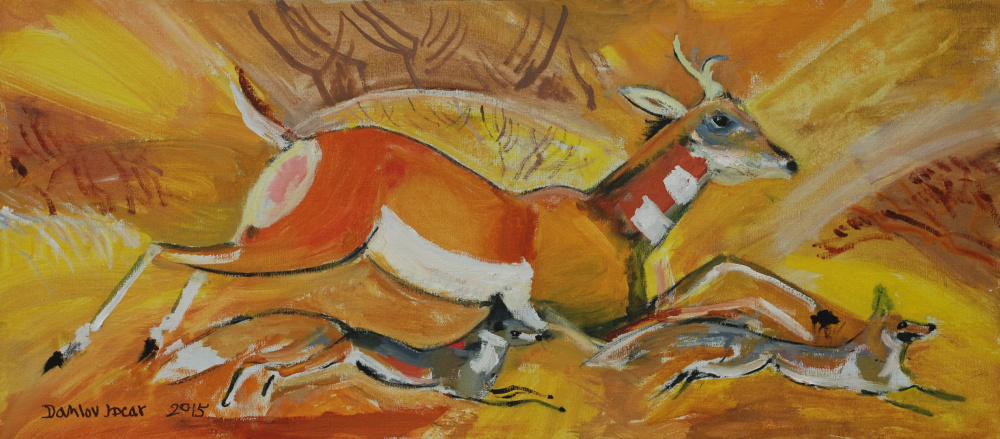
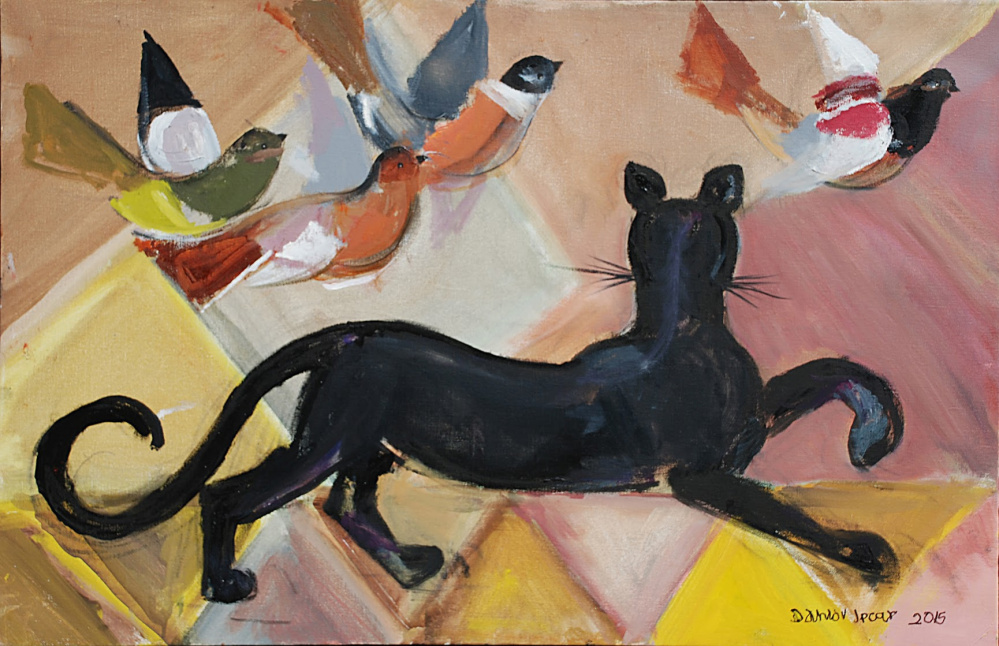
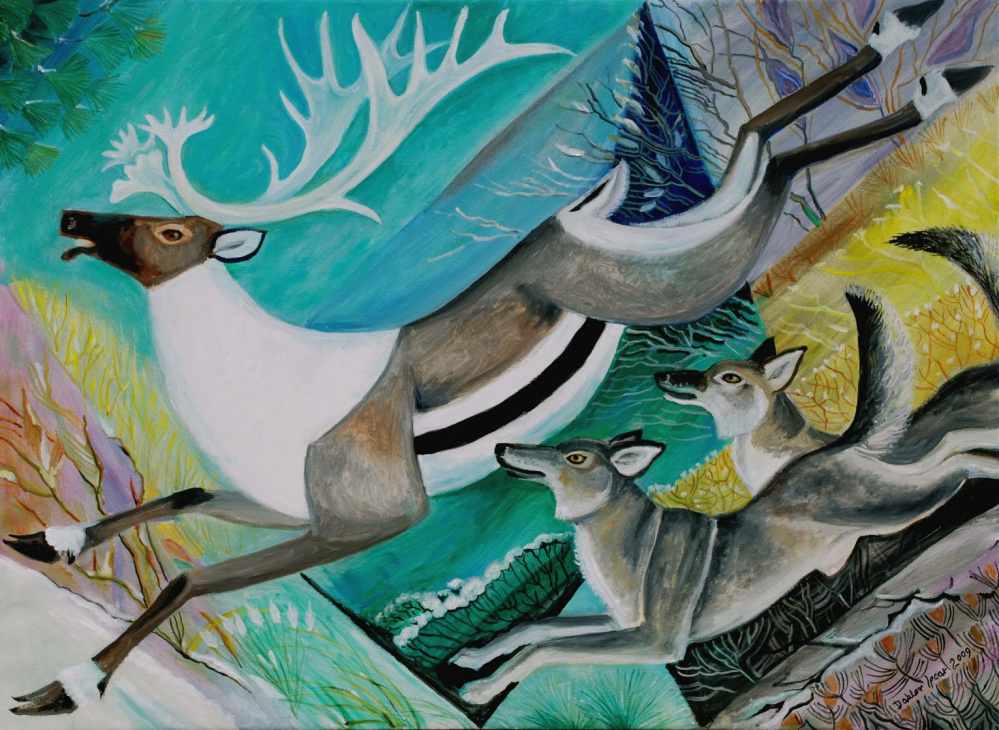
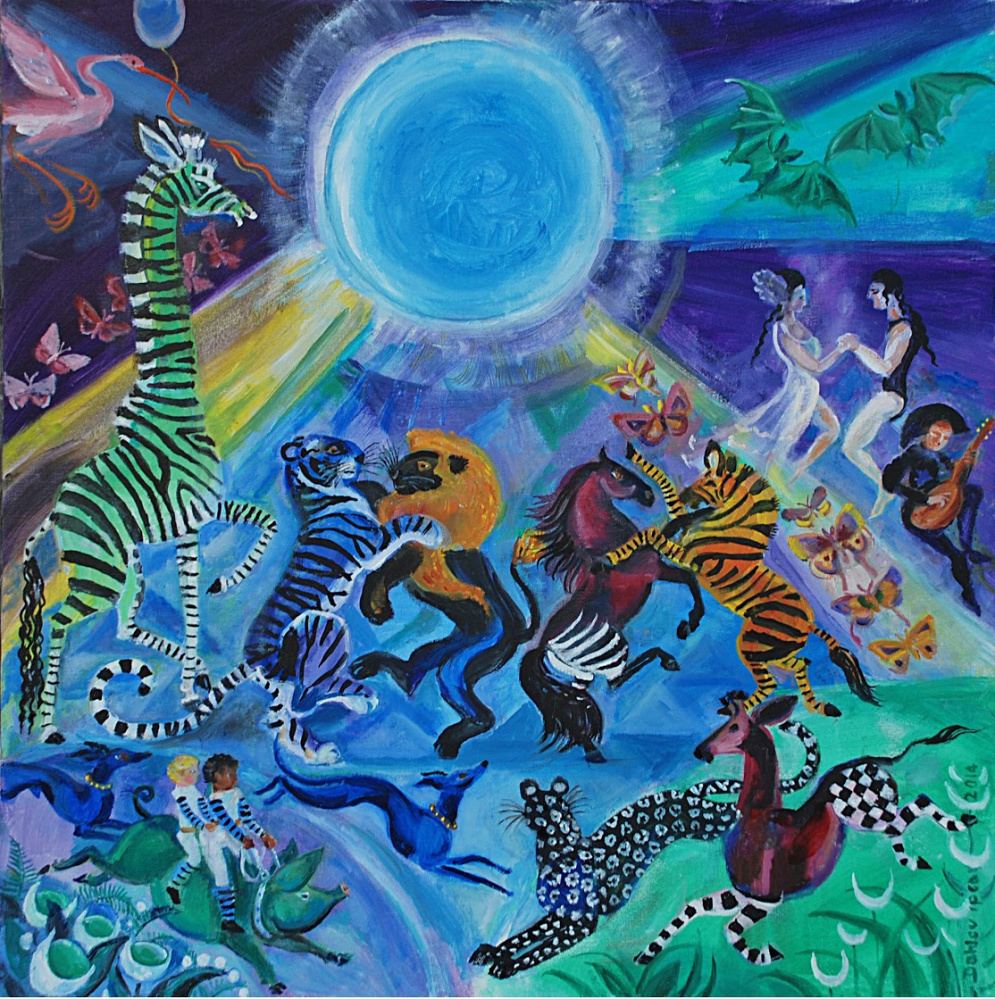
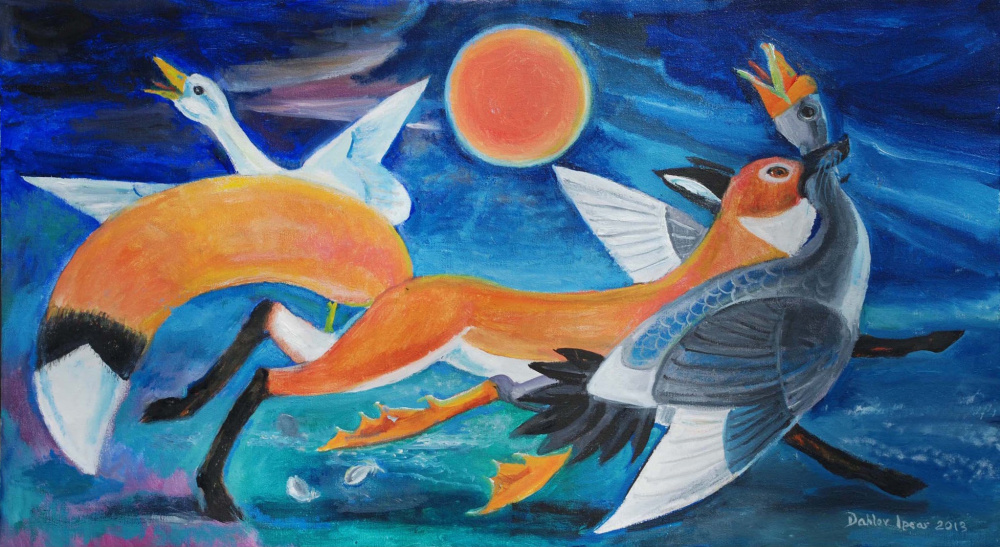

Success. Please wait for the page to reload. If the page does not reload within 5 seconds, please refresh the page.
Enter your email and password to access comments.
Hi, to comment on stories you must . This profile is in addition to your subscription and website login.
Already have a commenting profile? .
Invalid username/password.
Please check your email to confirm and complete your registration.
Only subscribers are eligible to post comments. Please subscribe or login first for digital access. Here’s why.
Use the form below to reset your password. When you've submitted your account email, we will send an email with a reset code.